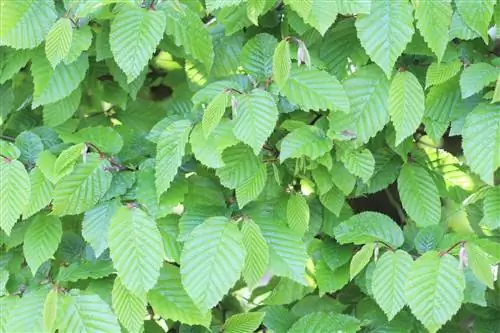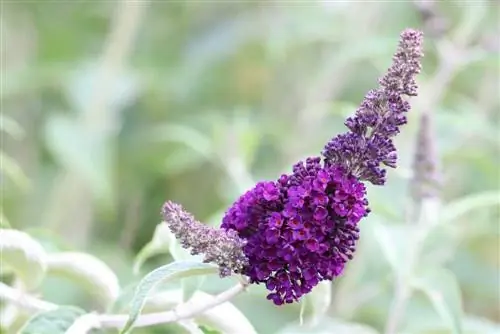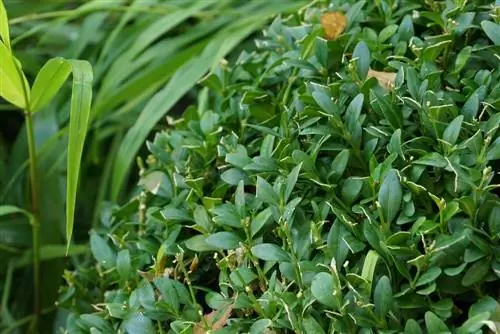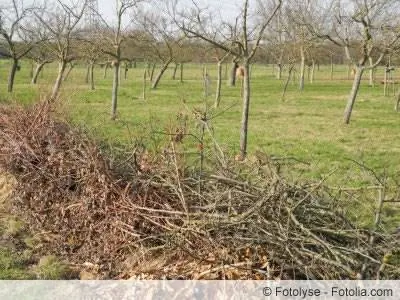- Author admin [email protected].
- Public 2023-12-17 03:39.
- Last modified 2025-06-01 06:48.
Easy to care for, winter green, foliage-shedding, fast or slow growing, flowering, fragrant, native or exotic, the selection of hedge plants is huge. Which criteria should the future privacy hedge meet? As a decision-making aid, small trips to residential areas and allotment gardens, a kind of “hedge sightseeing”, can be very helpful. Here you can see privacy hedges in use for many years. Some helpful background information about suitable hedge planting is useful. After all, it is important to select the best hedge plants for a long period of time, with a lot of material and labor. Below is a selection of different, attractive hedge plants.
Hedging plants, varieties
It should be an evergreen hedge? An easy-care, slow-growing hedge? A natural hedge that is visited by many birds and butterflies? Coniferous or deciduous shrubs? A selection of the best hedge plants
Evergreen
- Barberry
- Boxwood
- Yew
- Firethorn
- Spruce
- Cotoneaster
- Cherry Laurel
- Holly
- Juniper
Summer green
- Maple
- Apple Rose
- hornbeam
- Dogwood
- Hazelbush
- Common Beech
- Sea buckthorn
- Blackthorn
Flowering
- Bloodcurrant
- Lilac
- Forsythia
- Gorse
- Jasmine
- Rhododendron
- Butterfly tree
- Spiere
Boxwood, Buxus
The boxwood is a high-quality, classic hedge plant. It only grows about 10 cm per year. He is very cut tolerant. Evergreen and easy to care for, it provides a calm, elegant, green look. Its bark and leaves contain the poison alkaloid buxin. Animals and sensitive people can experience symptoms of poisoning when touched. It can be easily propagated by cuttings.
Tree of Life, Thuja
The evergreen, opaque needles of the fast-growing thujas make them so attractive as a hedge plant. Thuja is extremely hardy and easy to care for. These are perfect properties for those who want a quick privacy screen and don't want to have to work hard to maintain it. Pruning twice a year is optimal. Thuja is poisonous and must not be consumed under any circumstances, nor should the sap released come into contact with the skin.
Yew, Taxus
A yew hedge lasts forever, because yew trees live for several hundred years. The soft green needles form a beautiful hedge structure. Particularly attractive when the red fruits form in late summer and autumn. The yew also tolerates severe pruning. It has low demands on location and soil quality; it copes well with both shady and sunny areas. The needles, bark and seeds of the fruit are very poisonous to humans and pets.
Cherry laurel, Prunus laurocerasus
The cherry laurel is an evergreen leafy plant. This means that it offers good privacy protection all year round with its leathery, large, dark green leaves. Due to its coarse branching and large leaves, it is better to cut it by hand. It is not suitable for a perfect shape cut like with Bux or Thuja. Cherry laurel can also be wonderfully combined with other hedge plants, such as conifers or rhododendrons, thereby offering a lively, varied privacy screen.
Cotoneaster, Photinia fraseri
As a loosely growing shrub with colorful leaves, the cotoneaster delights people and birds alike all year round. The red tint of their young leaves means they can be attractive to use in combination with green hedge plants. Partially shaded, protected locations and a permeable, generally moist soil allow the medlar to thrive particularly well. The dark berries in autumn look very pretty and are often eaten by birds. Only the young plants need some winter protection.
Holly, Ilex
The holly tree offers an evergreen and impenetrable privacy screen. Hardy and undemanding to care for, the Ilex boasts bright red berries in autumn. It needs a bright location and a lime-free, permeable, moist soil. Before planting, it is important to ensure that the soil is loosened well for the long, deep roots, not just on the surface. The holly grows up to 20 cm per year, making it one of the slow-growing plants.
Bloodcurrant, Ribes sanuineum
In spring, the bloodcurrant with its deep red flower clusters is a magnificent eye-catcher. From July onwards they have blue-black berries, tasteless but non-toxic. It can grow up to 2.50 m high and 1 - 1.50 m wide. It looks particularly pretty in a mixed natural hedge, e.g. B. with the yellow-flowering forsythia. After flowering, pruning promotes flowering for the next year. As a shallow rooter, the bloodcurrant should never dry out completely. In winter, their roots like a warming layer of mulch.
Gorse, Genista
Broom thrives as a flowering hedge plant on nutrient-poor and dry soils. It tolerates a location in full sun. Damp soil and shade, on the other hand, cause it to actually wither away. It is very poisonous in all parts. No fertilizing, no watering, everything the broom needs, it gets from the depths with its taproot. Regular trimming is not necessary either, just to keep it in shape a little. If a hedge plant deserves to be called undemanding and easy to care for, then it is the gorse. Together with pine, juniper or wild rose, it can shine as part of a natural, varied hedge.
Privet, Ligustrum
The privet hedge is probably the most widespread hedge plant. If trimmed regularly, it becomes very dense. There are deciduous and evergreen varieties. The varieties also differ greatly in their height. It likes sunny to partially shaded and has no special soil requirements. A privet hedge can be easily cut into shape. Before going up, trim it at a low level for a while to make it as opaque as possible.
Hornbeam, Carpinus betulus
A very popular, summer-green hedge is the hornbeam. It grows almost half a meter in height in a year. The leaves change color in autumn, become dry in winter and some of them fall off. In the case of the beech hedge, almost all of the dried leaves remain on the branches until the new leaves emerge in spring. The hornbeam likes it sunny to partially shaded and otherwise has no special requirements. It is extremely cut-tolerant. Formed into a hedge, you should become a little narrower towards the top so that the lower branches get enough light for further branches.
Conclusion
There are an endless number of native and hardy, exotic trees that are suitable for use as privacy hedges. In any case, you should think about it before purchasing:
- which location and soil conditions you can offer your future hedge
- how much cutting and care effort you can or want to invest
- what dimensions (width and height) the hedge should have is allowed
- which style suits the garden (e.g. natural hedge or topiary hedge)
Homemade: mobile privacy screen
- Get a plastic-coated trellis from the hardware store. It should be wide enough to fit comfortably into the flower box. Shape one side into a U exactly according to the inside dimensions of the box and place it in the container.
- Spread a layer of gravel on the bottom of the box as drainage and to weigh it down. Fill in pre-fertilized quality soil. Now you can use several annual climbing plants as you wish. Finally, pour heavily.
- In a sunny spot, for example, the blue morning glory or the black-eyed Susan will soon be competing. And you can relax undisturbed wherever you want. Finally, you have a privacy screen that moves with you if necessary.
If you sometimes have the feeling that you are being watched by passers-by or neighbors while having a coffee chat on the terrace, you can do something about it now in autumn. Autumn is the ideal planting date for perennial climbing plants. Until it gets really cold, the green vines have enough time to form roots and in spring they can then invest all their energy in developing new shoots. This creates a green curtain in no time that blocks out the sun, wind and prying eyes.
In order for the climbing acrobats to feel comfortable in their new location, they need good starting conditions in addition to stable climbing aids. The planting hole should be spacious enough to comfortably accommodate the roots. Improve sandy or loamy soil with bark humus and mix in some organic fertilizer. Do not plant the plants too deep and compact the soil around them. Finally, water the planting site thoroughly. Create a privacy hedge - the best hedge plants






